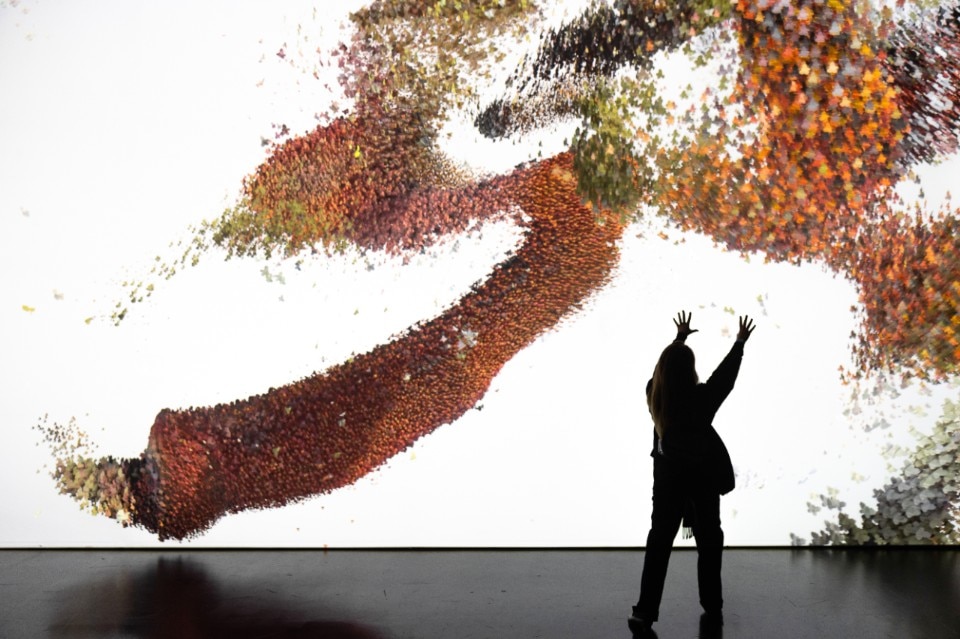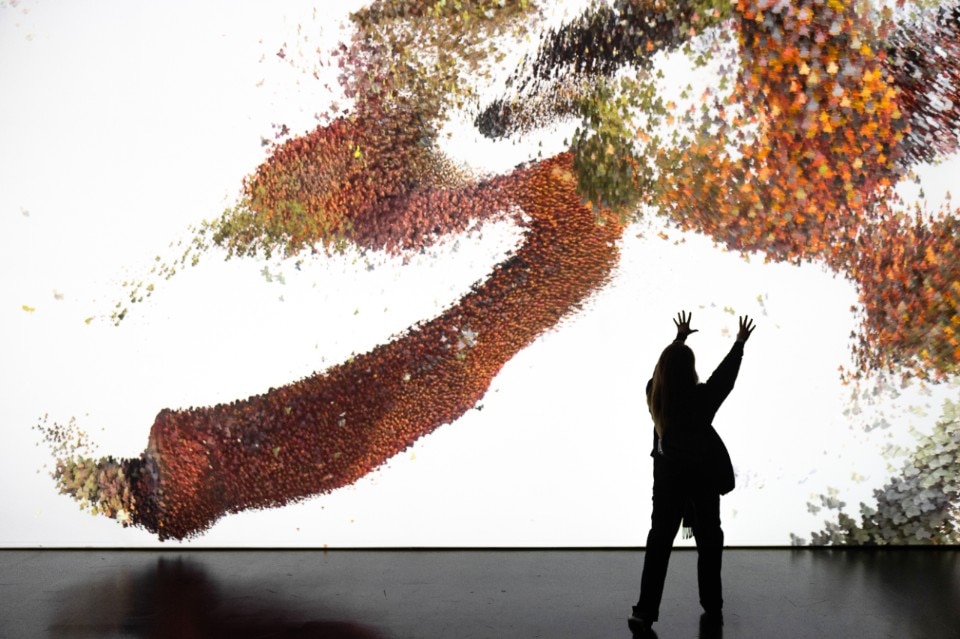It may have occurred to you while waiting to board your flight at Schiphol, the sprawling airport hub on the outskirts of Amsterdam, that your gaze was drawn to the large digital screens displaying flight information near the departure gates. You might have noticed that this flow of information was occasionally interrupted by a carousel of digital artworks taking over the screens. These artworks could include Entangled Others and Robert Thomas’ marine biology images or Libby Heaney’s surreal landscapes where the climate crisis meets quantum physics. A sign introducing the artworks aptly states, “For the next minute, you’re not in an airport but in a museum”. The museum in question is a novelty even for a city with a remarkable concentration of exhibition spaces like Amsterdam: Nxt Museum, the first of its kind in the Netherlands, exclusively dedicated to new media, opened its doors in 2020. Until June next year, it will host the first major exhibition featuring the groundbreaking work of the British collective, Random International.
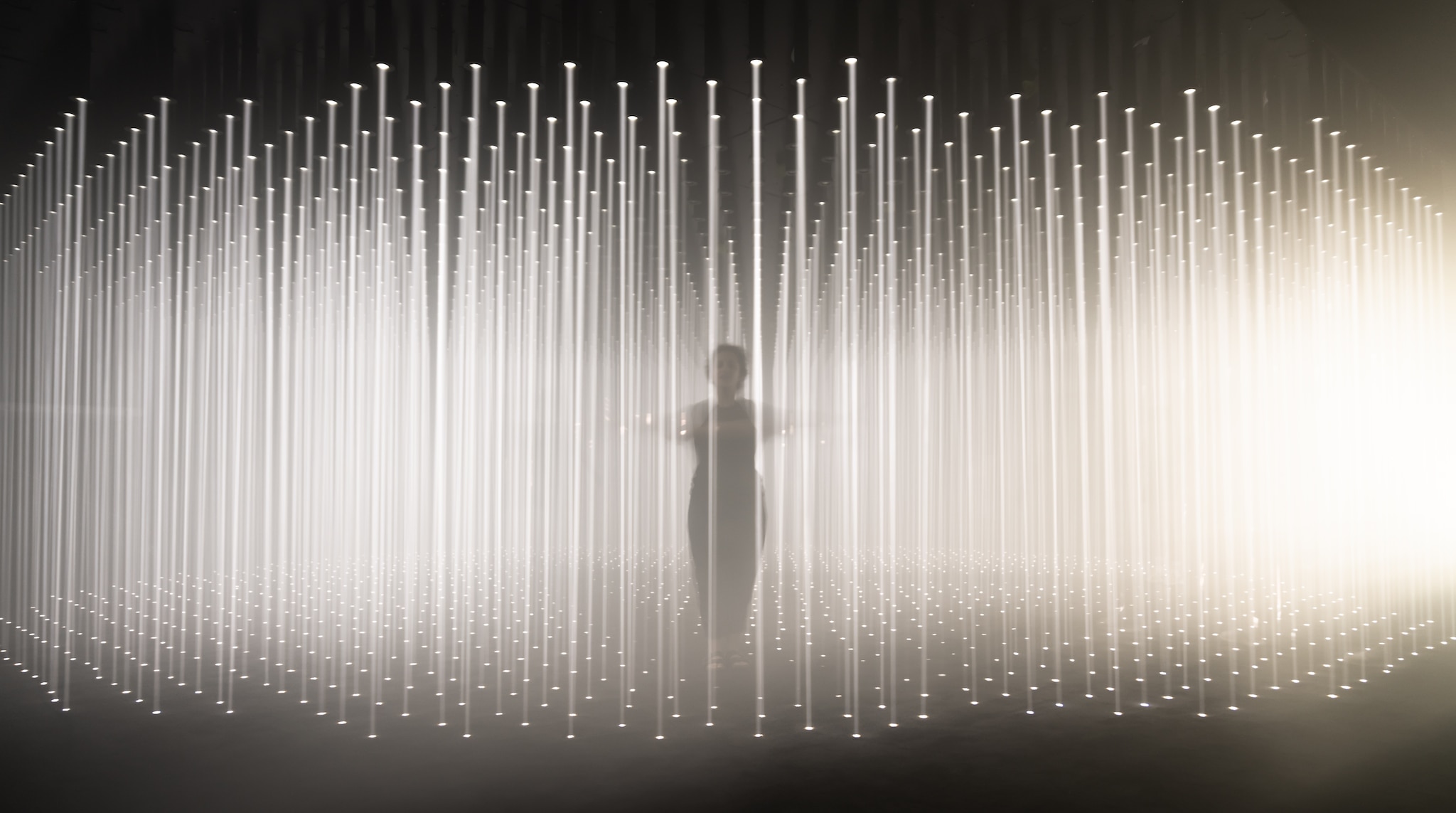
Opening a museum in the middle of the Covid outbreak may seem like a bold move. But Nxt Museum is in a league of its own, especially considering the explosion of digital art during the quarantine. Artistic director Natasha Greenhalgh, who founded the museum with managing director Merel van Helsdingen, explains this to Domus on a surprisingly warm October morning. She sits at a table in Metro, the museum’s stylish cafe-restaurant in the hyper-cool suburb of Amsterdam-Noord, quite far from Schiphol.
Nxt is housed in a former television studio (Greenhalgh smiles and jokes, “What better place for a new media museum?”) that they completely transformed. The artistic director emphasizes the need for a space like Nxt Museum – a physical exhibition space dedicated to new media, where artistic narratives addressing the metaverse, NFTs, blockchain, artificial intelligence, the climate crisis, and other pressing issues come to life. These concepts are translated through dance, performance, and immersive installations, such as Nxt Museum’s participation in the Amsterdam Dance Event. Greenhalgh pulls out her smartphone to share videos in which music, visuals, and the movements of performers and audience seamlessly intertwine in spontaneous choreography. Yes, the body. After all, what purpose would a museum serve without people navigating its space?
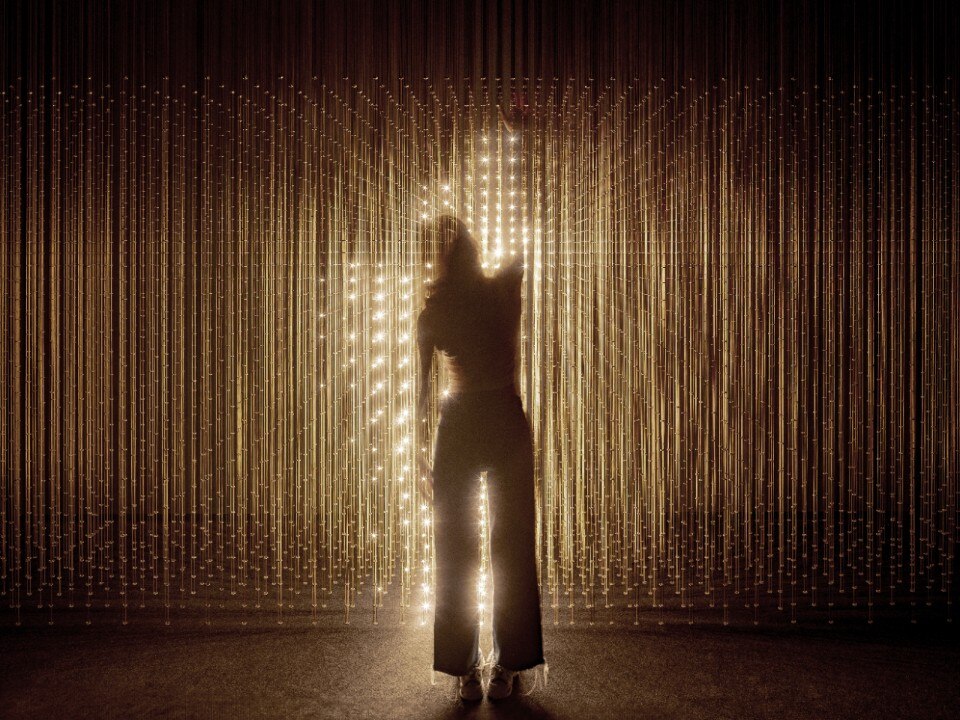
Symbolically, the opening of Random International’s monograph was accompanied by a dance performance featuring Sedrig Verwoert within the expansive installation resembling an interactive light cage – Living Room. As she guides me through the exhibition Greenhalgh’s movements also resemble a dance, especially as she activates a swarm of digital objects in Life in Our Minds: Motherflock III, a work inspired by boids – virtual entities that mimic bird behavior, originally created by CGI expert Craig Reynolds in the mid-1980s. These “boids” have found applications in various contexts, from video games to movies. This artwork offers an intriguing perspective on artificial intelligence through the lens of a collective life form that, in Random International’s interpretation, reacts to the presence of visitors through three sensors that track their movements. And it’s intertwined with blockchain, as each individual boid has a different identity.
“Twenty years ago, works like this would hardly have made it into a museum”, reveals Nxt’s freelance curator, Bogomir Doringer. This revelation comes in the midst of a close exchange via email and WhatsApp voice messages as he traces the creative evolution of the pioneering art collective. Their focus has always been on exploring the impact of technology on the human condition, and has been heavily influenced by scientific research. Central to this were the dinners that grew out of a PDF document outlining the future of humanity, crafted by Random International dramaturge Heloise Reynolds. These dinners evolved into full-fledged symposia, attracting a wide range of outside guests and creating what Bogomir describes as “the ritual of eating”. Many of the projects featured in the exhibition find their roots in these gatherings. “The dinners served as a testing ground for ideas”, he explains. And they were also the catalyst for the projects now on view at Nxt Museum.
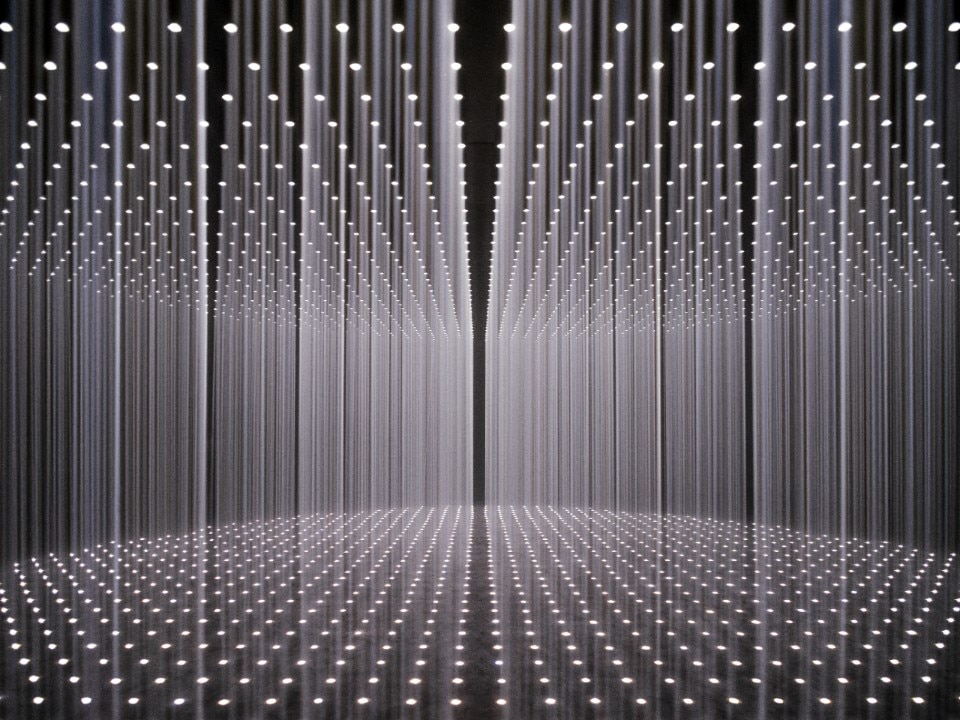
The exhibition is made up of 6 large installations, separated by what Doringer calls “transitional rooms”, Wunderkammer. These are the spaces where ideas stemming directly from those dinners find their home, elaborated upon in the digital information panels crafted by the museum, drawing clear inspiration from magazine layouts. The rooms are also places of decompression – spaces where visitors can recenter themselves within the subtly unsettling atmosphere created by Random International. The first installation, Presence and Erasure, presents itself as an innocuous print of faces on a large panel. However, the visitor soon realizes that the faces belong to those who have just entered the room.

“It is fascinating how they use so little to convey something so complex”, says Doringer, analyzing Random International’s artistic language. “Life in a Different Resolution” is no accident as the title of this exhibition. It unfolds among stories “told with minimal visual information”. This is not to say that these works are simple in technique, technology, or concept. They took years to develop, and the installation of the exhibition itself required a continuous three-week effort. But the result is one of minimalism and simplicity, as exemplified by the work that closes the exhibition, Fifteen Points/ii. In this work, a robot moves along two tracks and reconstructs a human figure using 15 points of light, enough to convey its character, mood, and gender. This piece, originating from a residency at Harvard, demonstrates how little information the human brain needs to perceive an identity from minimal data. It can be either disturbing or fascinating. Some may not even recognize a human in it. After all, we are humans, not machines.
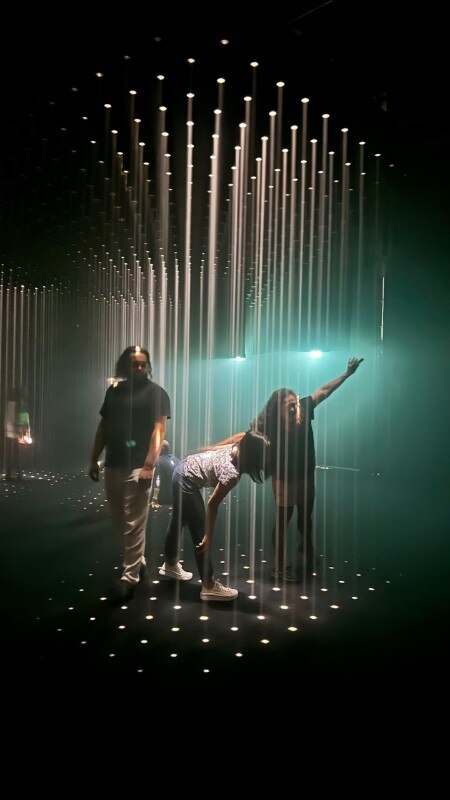
Artificial intelligence, surveillance, and decentralization are among the themes that Random International has explored in its more than 15-year journey. “Having these works close to one another, within the concept of a space for potential minds, allows us to see how we can actively participate in shaping or determining the future of this technology”, concludes Doringer.
The theme of life and our definitions of what is considered living or intelligent serves as the cornerstone of the entire exhibition. The path of the exhibition explores the possibility of a future where multiple intelligences coexist. The human and the artificial, for starters. But others could also come into play: the extraterrestrial, the bio-machine. This raises an inevitable question that remains with the visitor even after leaving the exhibition: what will happen when all these intelligences coexist?

Opening image: Life In Our Minds: Motherflock / III (2023) by Random International with sound by Masahiro Hiramoto – exhibited in ‘Life in a Different Resolution’ at Nxt Museum, The Netherlands. Photo Maarten Nauw


